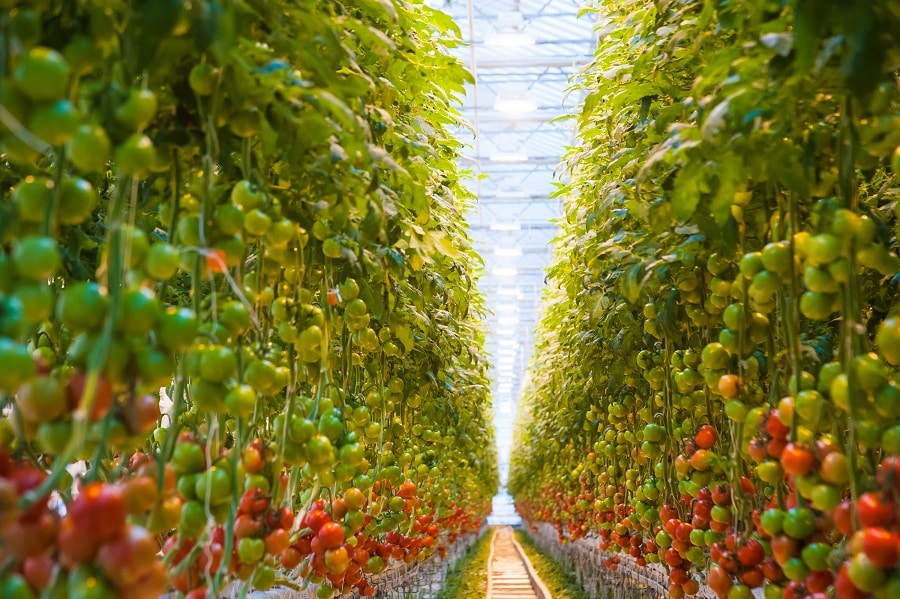Growing delicious healthy tomatoes starts with using the best organic fertilizer. An organic fertilizer made from natural ingredients like bone meal, kelp and compost provides a slow-release feeding that tomato plants thrive on.
In this complete guide, we’ll cover everything you need to know about choosing and using organic fertilizers for optimal tomato growth and production.
Why Organic Fertilizer is Best for Tomatoes
Organic fertilizers made from plant and animal byproducts nourish the soil food web – the bacteria, fungi, and other microorganisms that keep soil healthy. These beneficial microbes help tomato plants take up nutrients and make soils resistant to disease.
On the other hand, chemical fertilizers can damage soil life. So organic fertilizer is best for tomato plants and the environment because it doesn’t get into groundwater and causes problems for the environment.
Organic fertilizers also lead to better tasting tomatoes. The diverse nutrients and microbes boost tomato flavor and quality.
When to Fertilize Tomato Plants
It’s important to time your fertilizer applications for maximum benefit:
-
When it’s time to plant, put one to two cups of organic fertilizer in the hole before you put the tomato start in it. This gives young roots an immediate nutrient boost.
-
4 weeks after transplanting, sidedress plants with 1/2 cup organic fertilizer sprinkled around the base of each plant. Mix lightly into the top inch of soil.
-
When the first fruits start ripening, it’s time for a final feeding. Repeat the sidedressing application above.
Avoid overfertilizing, which can cause leaf burn, excessive foliage, and poor fruit set. More is not better with organic fertilizers!
The 5 Best Organic Fertilizers for Tomatoes
After testing many products, these organic fertilizers produced the healthiest, most abundant tomato crops:
1. Espoma Tomato-Tone
This popular organic fertilizer is formulated specifically for tomatoes with a nutrient ratio of 3-4-6. The higher phosphorus and potassium promotes fruiting and ripening. Bone meal, feather meal, and Epsom salts provide a complete nutritional package.
Key Benefits:
- Enhances tomato flavor and quality
- Encourages abundant fruit set
- Also great for peppers, eggplant, and other vegetables
2. Down To Earth Vegetable Fertilizer Mix
This organic fertilizer is nutritionally complete because it contains both plant-based foods and manures. Contains fast and slow release nitrogen for steady feeding. The diverse ingredients also provide an array of micronutrients.
Key Benefits:
- Balanced 6-3-3 NPK ratio
- Includes beneficial microbes
- Versatile for all vegetables and herbs
3. Dr. Earth Organic Tomato Fertilizer
With a higher nitrogen content, this fertilizer promotes vigorous foliage growth. The 4-6-3 ratio along with calcium, magnesium and iron feeds plants and corrects common deficiencies. Contains no manures for a vegan formula.
Key Benefits:
- Stimulates abundant leafy growth
- 7% calcium prevents blossom end rot
- Also great for peppers, herbs, and greens
4. Neptune’s Harvest Organic Tomato & Vegetable Fertilizer
Made from fish, seaweed, and molasses, this fertilizer provides fast nutrition. The 2-3-1 ratio encourages fruiting and ripening. Seaweed adds beneficial microbes and 60+ trace minerals. The odor fades quickly after application.
Key Benefits:
- Fish provides fast-release nitrogen
- Seaweed boosts soil health
- High iron corrects yellowing leaves
5. Jobe’s Organics Vegetable & Tomato Granular Fertilizer
Convenient spikes provide slow-release feeding for the whole season. Just push into soil around each plant. The 2-7-4 nutrient ratio focuses on phosphorus and potassium for more and larger tomatoes. OMRI listed organic.
Key Benefits:
- Easy to use spikes
- Feeds up to 8 weeks
- Also great for containers
How to Apply Organic Tomato Fertilizer
Always follow label directions carefully when applying any fertilizer product. Here are some general guidelines:
-
For granular fertilizers, sprinkle them around the base of the plant and lightly work them into the top inch of soil. Avoid direct contact with stems or leaves.
-
For liquid fertilizers, dilute per instructions and water into the soil around plants. Don’t spray leaves.
-
When using fertilizer spikes, insert them 4-6 inches from the plant stem, pressing flush with the soil surface.
-
After applying any fertilizer, water thoroughly so it can start breaking down.
-
Reapply as directed on the label, usually every 4-6 weeks.
By using the best organic fertilizer for tomatoes at the right times, your plants will reward you with an abundant harvest of juicy red tomatoes!

